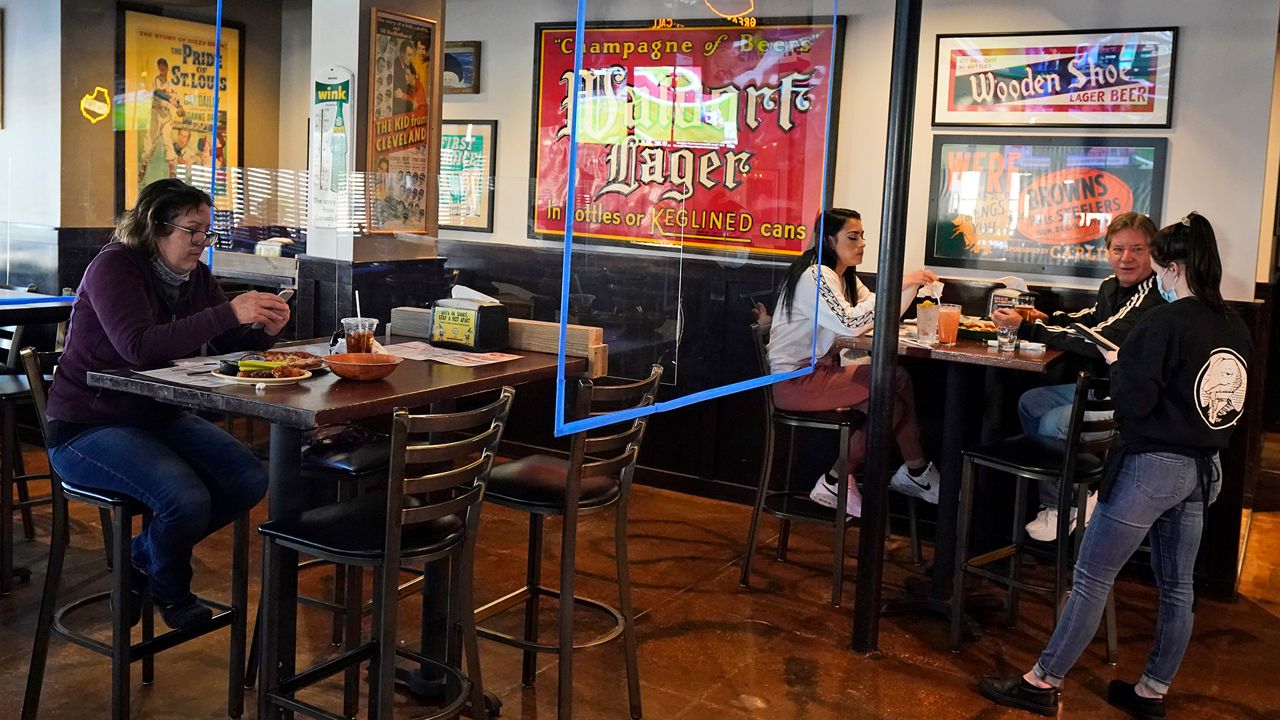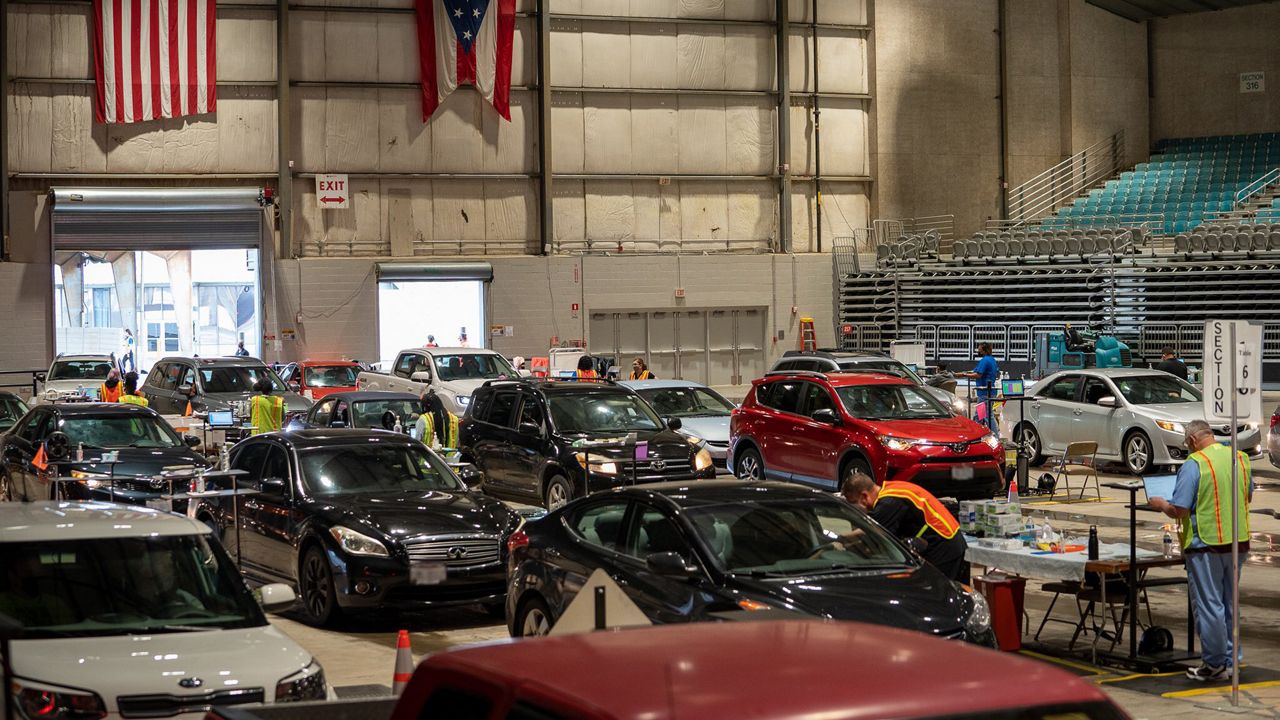COLUMBUS, Ohio — The state is asking for 480,180 first-dose shots to be stored due to the slowing demand for COVID-19 vaccinations in Ohio, officials said Wednesday.
With supply exceeding demand, the state may not request the full number of vaccine doses available next week, Ohio Department of Health spokesperson Alicia Shoults added.
Ohio’s announcement comes after the Biden administration informed governors on Tuesday it is planning to shift its strategy for distributing vaccine supply to states, making more inoculations available to states where demand is greater.
Gov. Mike DeWine said Ohio surpassed a 50% vaccination rate Wednesday for the state’s adult population, but the pace of vaccinations in Ohio has declined significantly. As of the latest update, 4.8 million residents have been vaccinated, which is 41% of the state's total population, but daily first-dose vaccinations in Ohio have dropped by nearly 70% from the peak, according to the seven-day average.
Under President Joe Biden’s new plan, states are being asked to consider whether they need the full amount of doses available to them. Weekly allocations will still be determined by relative population by state, but unordered vaccines will be placed into a “federal pool” from which states that need more than 100% of their weekly allocation can apply for more doses, up to 50% above their weekly allocated amount.
In a statement Wednesday, Shoults explained how Ohio is responding to the development:
As we are seeing across the nation, demand for COVID-19 vaccines is slowing in Ohio. The state has not rejected any vaccines allocated to Ohio by the federal government, and has not returned any doses to the federal government. We have not pulled down the state’s full allocation recently, but rather requested that some doses be securely stored by the federal distributors as new vaccination opportunities are added. There are currently 480,180 first doses that Ohio has asked be stored for a later date.
We do not yet know how much vaccine Ohio’s providers will need next week, but we anticipate that we may not need to order the entire allocation. With the new federal ordering procedure, any unordered doses for next week will go into the federal vaccine pool, while the 480,180 doses remain allocated to Ohio to be pulled down at any time. In a given week, states can order up to 100% of their allocation. If additional doses are needed, states can pull down up to 50% of their weekly allocation from the federal vaccine pool.
We are working with enrolled providers to create new vaccine opportunities across the state, and with the new ordering process, feel confident we will be able to work with the federal government to ensure there are ample opportunities to be vaccinated in Ohio.
For the week of May 10, Ohio has been allocated 324,960 first-dose shots from Pfizer (173,160), Moderna (131,500) and Johnson & Johnson (20,300), according to a Centers for Disease Control and Prevention (CDC) update Tuesday.
At an event in Toledo Wednesday afternoon, DeWine said the state’s vaccination numbers are disappointing, but he remained optimistic that life will return to normal this summer. The state’s task now is ensuring that the vaccine is as accessible as possible, via mobile clinics, walk-in opportunities and on-site immunization days at schools, workplaces and other venues, the governor said.
“The vaccinations have really slowed down, and we're grinding this out,” he said at the National Museum of the Great Lakes, where he held an availability to promote Ohio tourism. “We continue to move, but we're not moving at as high a rate as certainly we would like.”

On Wednesday, Ohio’s seven-day average case rate stood at 1,393, which represents a 37% drop since a mini-peak in April that followed a slight resurgence of the virus, which officials said was fueled by the spread of more contagious variants.
“If you look at the cases, cases are going down, and they're going down at a pretty good clip now, so we don't know that that has settled in, but we're seeing these numbers go down,” DeWine said.
With case numbers dropping, DeWine indicated Wednesday he may stick with his original plan to end health orders in Ohio when the case rate drops below 50 per 100,000 for a period of two weeks instead of switching to a vaccination target for ending health orders. On Monday, Ohio’s case rate was 147.9.
“The goal of 50 seems to me is still a reachable goal. It seems to meet the right goal,” he said. “I think we just stay on course, but this summer is going to be good.”
After considering a vaccination target, DeWine said Wednesday he is realizing it may not make sense after all.
"The difficulty with coming up with a percentage of people vaccinated — and you can certainly do that. Some states, Kentucky, for example, have done that — the difficulty with that is we really don't know at what point you get herd immunity, if you get it,” he said.
Rather than incentivizing vaccinations with a goal that would end health orders, DeWine said Ohio officials are having discussions about other incentives.
“We've seen what some other states have done — beer, 'shots for a shot’ — we've even talked about setting up a kind of a lottery, and we haven't done it, but we're looking for ideas.”
Second-dose vaccinations are still occurring at a strong pace in Ohio, DeWine said, giving him hope for the summer.
“I think that this summer will be fundamentally different than what we've seen in the past. This summer, we're going to get back to normal,” he said.



